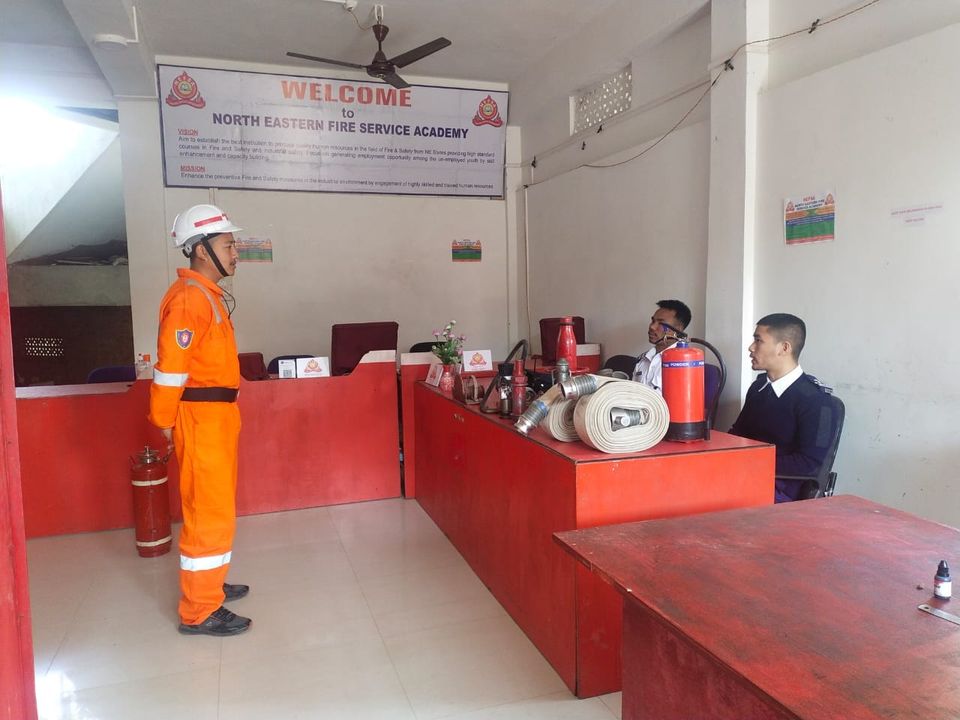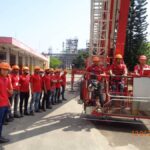Firefighters are often seen as everyday heroes. They rush to the scene of accidents, fires, and disasters, saving lives and protecting communities. But behind the bravery and heroic feats lies a rigorous process of training, quick decision-making, and dedication. As a student at NEFSA (Northeast Fire and Safety Academy), I’ve had the privilege to learn not only about the technicalities of firefighting but also about the profound impact firefighters have on individuals and entire communities. This blog explores how firefighters save lives, from their quick response times to their life-saving techniques, all through the eyes of a student passionate about fire and safety.
1. The First Responder Role: Immediate Action Saves Lives
When disaster strikes, seconds matter. Firefighters are often the first responders to an emergency situation, whether it’s a fire, a road accident, or a natural disaster. Their ability to act swiftly can make the difference between life and death.
For example, in a fire, the main goal is to get people out of danger as quickly as possible. A firefighter’s quick thinking and fast response can prevent injuries or fatalities by evacuating individuals from the burning building and providing immediate care. The quicker they reach the scene, the higher the chances of saving those trapped by fire or smoke.
2. Rescuing People from Dangerous Situations
Firefighters are equipped with specialized rescue tools to extricate people from dangerous situations. From high-angle rescues to extricating victims from car accidents, these professionals are trained to deal with high-risk scenarios. Their knowledge of using hydraulic rescue tools, ropes, and ladders enables them to save individuals who are trapped in collapsed buildings or vehicles.
Through my training at NEFSA, I’ve learned how critical it is to approach each rescue with both precision and caution. Understanding the proper techniques for extracting someone without causing further injury is essential to preserving life. The work firefighters do in these high-stress situations requires an immense amount of skill, experience, and, above all, quick thinking.
3. Providing Medical Aid: The First Step in Emergency Care
Many people don’t realize that firefighters are also trained medical responders. In many emergency situations, such as heart attacks, car crashes, and burns, they provide crucial first aid or basic life support (BLS) until paramedics arrive.
At NEFSA, we emphasize the importance of emergency medical services in firefighting training. Many fire departments train their personnel in advanced first aid, CPR, and trauma care. The ability to stabilize a victim’s condition before the ambulance arrives is a vital aspect of firefighting. It can mean the difference between life and death, especially in critical situations like a cardiac arrest or severe burn injuries.
4. Prevention and Fire Safety Education
Another critical aspect of firefighting is fire prevention and safety education. Firefighters don’t just respond to emergencies; they also work tirelessly to prevent them. They conduct safety checks, educate communities about fire hazards, and work with local authorities to implement fire codes and safety regulations.
Through NEFSA’s fire safety training programs, we learn that prevention is key to reducing the number of lives lost to fires each year. Teaching children and adults about fire safety — such as how to use fire extinguishers, evacuate safely, and practice fire drills — is one of the most impactful ways firefighters save lives before an emergency even occurs.
5. Specialized Firefighting Techniques for Diverse Scenarios
Firefighting is not a one-size-fits-all profession. Each emergency requires specialized knowledge and techniques, whether it’s fighting a wildfire, rescuing someone from a burning building, or handling a chemical spill.
At NEFSA, I’ve had the opportunity to study different types of fires and their unique dangers. For instance, industrial fires involving hazardous chemicals require specific methods to contain the fire and prevent the release of toxic fumes, while wildfires demand knowledge of terrain, weather patterns, and rapid containment strategies. Firefighters are trained to handle all these scenarios, ensuring they have the necessary skills to save lives in any emergency.
6. The Psychological Aspect: Saving Lives Beyond the Physical
While firefighting is often physically demanding, it’s equally mentally challenging. The emotional toll of witnessing traumatic events and dealing with the aftermath can affect the mental health of first responders. At NEFSA, we also focus on the psychological aspect of firefighting, teaching how to cope with stress, trauma, and the pressure that comes with saving lives.
Firefighters often work in high-pressure environments where the stakes are incredibly high. They must stay calm under duress, make life-or-death decisions, and lead teams with confidence. Training also includes understanding how to manage mental health challenges, ensuring that firefighters are mentally prepared to handle their intense, life-saving roles.
Why Firefighting Is More Than Just a Job?
To many, firefighting is a profession, but to those who choose this path, it’s a calling. It requires more than just technical skills — it requires bravery, empathy, and a sense of duty to the community. As a student at NEFSA, I’ve come to understand that firefighters save lives not just by their actions, but also through their dedication to protecting others, both physically and mentally.
From being the first to arrive at the scene of an emergency to ensuring communities stay safe through education and prevention, firefighters play an irreplaceable role in society. Through my education at NEFSA, I’ve gained a deep respect for the profession, knowing that these heroes are always ready to rush in when others rush out.
Conclusion
As students training at NEFSA, we understand that becoming a firefighter is about more than just putting out fires — it’s about saving lives, preventing disasters, and making a lasting impact on the community. Every day, firefighters put their lives on the line to ensure that others are safe. The lessons we learn at NEFSA will one day prepare us to do the same, and this knowledge only deepens my respect for the incredible work firefighters do.
If you are passionate about making a difference, about saving lives, and about becoming part of a noble and courageous profession, consider training to be a firefighter. It is a profession that demands respect, and rightfully so. The men and women who put on the firefighter uniform truly save lives — and for that, they will always be our heroes.
Contact us today to know more about admissions, batch schedules, and course details.
Visit: www.nefsaindia.com
Location: Dibrugarh, Assam
For More Blogs:- Click here







